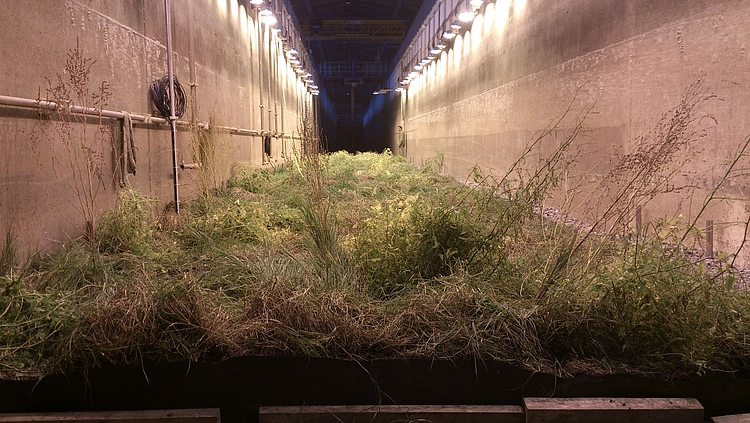Wave Dissipation and Transformation over Coastal Vegetation under extreme Hydrodynamic Loading
 © Forschungszentrum Küste
© Forschungszentrum Küste
| Leitung: | Dr. Iris Möller |
| Jahr: | 2013 |
| Förderung: | HYDRALAB IV - Transnational Access |
| Weitere Informationen | http://www.geog.cam.ac.uk/research/projects/hydralab/ |
| Bemerkungen: | 10 Wochen |
The multiple services provided by salt marsh ecosystems to the local, regional, and global community are being increasingly recognised and valued. At the same time, however, such ecosystems are under increasing pressure from sea-level rise, changes to wind wave climates, and more direct anthropogenic pressures such as grazing, which alter their functioning and potentially threaten their survival over the longer term. One important function of salt marsh vegetation is that of providing a storm surge buffer. A growing body of empirical studies have highlighted the potential role of vegetation in reducing hydraulic forces (current/wave loading). However, these insights have largely been based on physical scale models in relatively small and narrow flumes, affected by scaling problems and edge effects, which hinders the applicability of results to situations encountered in the field. Other studies have used numerical modelling to determine the impact of vegetation on hydraulic forces, but this suffers from the difficulty of accurately representing vegetation (plant and canopy) structure (the canopy is complex and the same density can be derived from very differing degrees of clumping of vegetation).
Previous field measurements of wave energy reduction under typical storm conditions are also questionable, as observations have been restricted to average (rather than extreme) tidal inundation depths and incident wave conditions (with limited information on the actual plant loading conditions). Furthermore, relationships between vegetation characteristics (density, flexibility, height, etc.) and physical parameters (water depth, incident wave energy, and observed wave attenuation) are non-linear. As it is not clear whether the coastal protection function is maintained under intense storm impacts, it is often neglected in the planning/management of coastal protection schemes
Regular updates are available in the project blog
And first results can be found here and in a paper published in Nature Geoscience.






